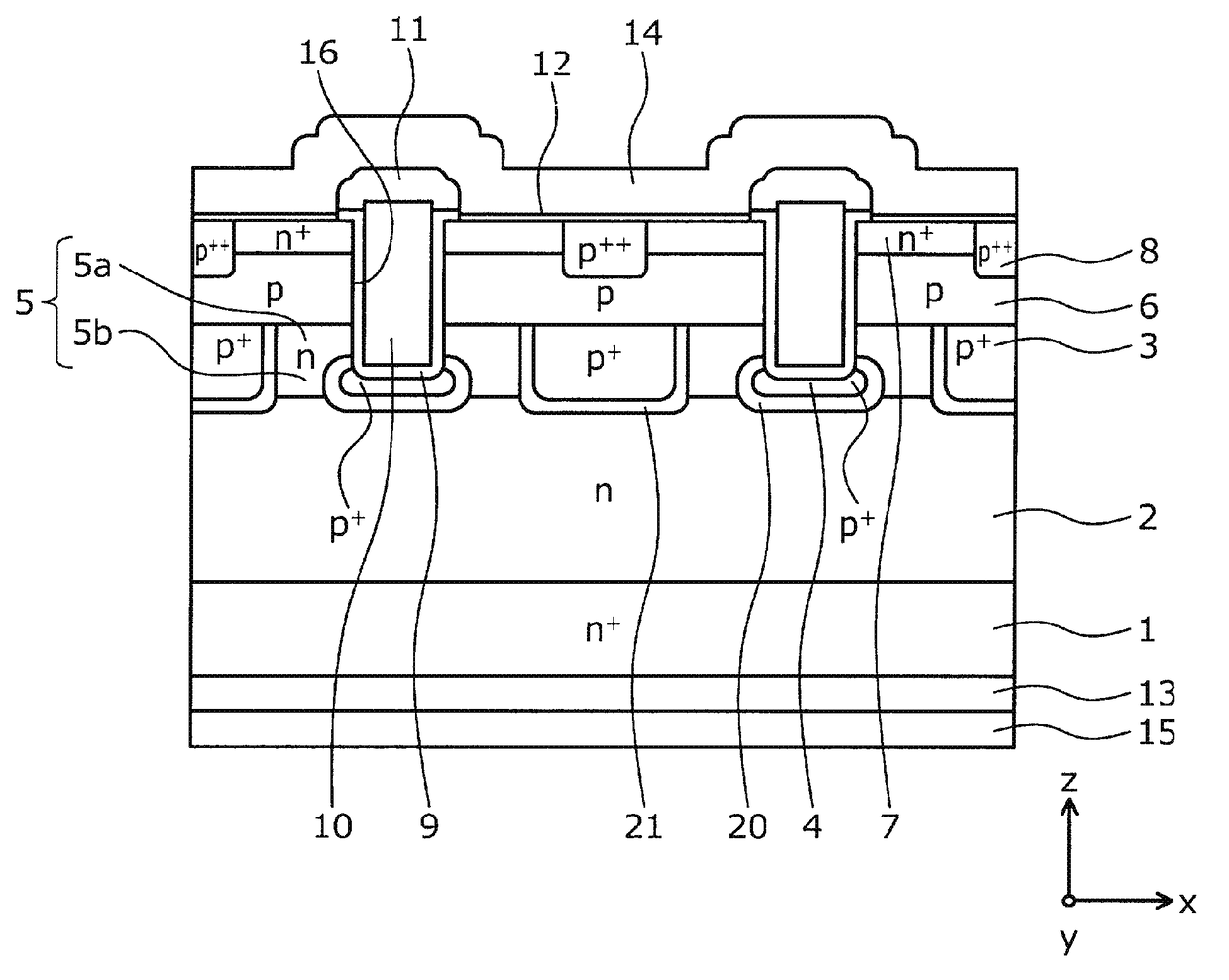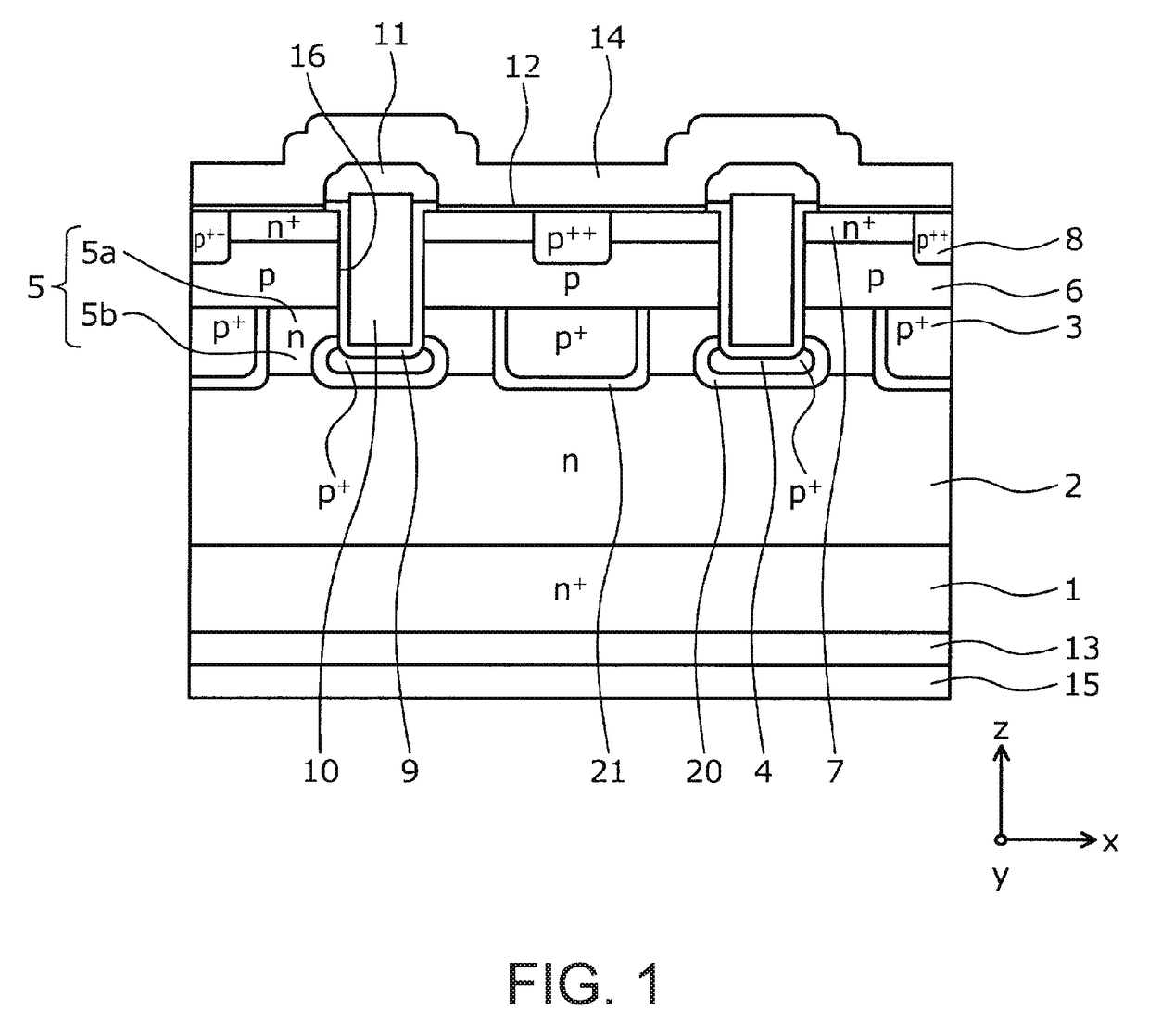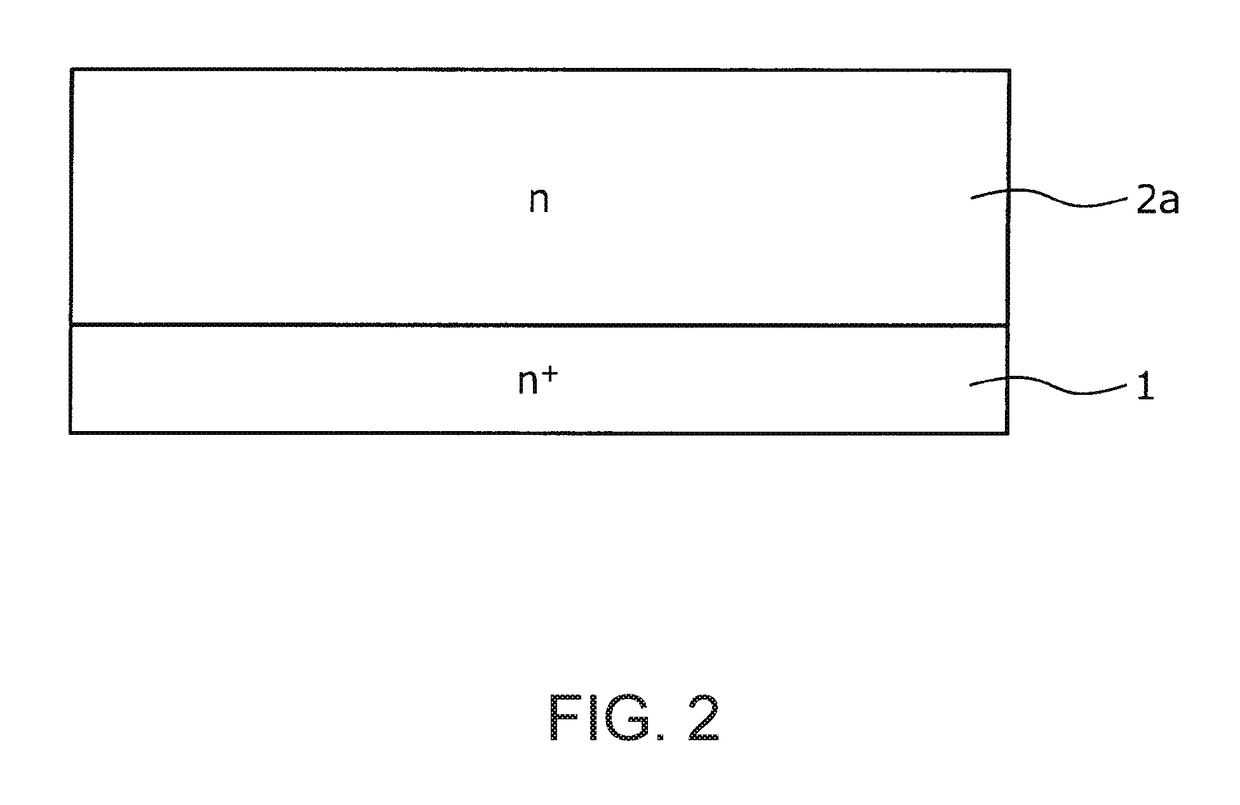Semiconductor device and method of manufacturing semiconductor device
a semiconductor and semiconductor technology, applied in the direction of semiconductor devices, basic electric elements, electrical appliances, etc., can solve the problems of increasing on-resistance, reducing the withstand capability of the device, and manufacturing extremely difficult, so as to reduce the on-resistance, increase the on-resistance, and manufacture extremely difficult
- Summary
- Abstract
- Description
- Claims
- Application Information
AI Technical Summary
Benefits of technology
Problems solved by technology
Method used
Image
Examples
embodiment 1
[0038]The semiconductor device according to one aspect of the present invention is formed using a wide-bandgap semiconductor. In the present embodiment, a silicon carbide semiconductor device manufactured using silicon carbide (SiC) as the wide-bandgap semiconductor, for example, will be described using a MOSFET as an example. FIG. 1 is a cross-sectional view illustrating a configuration of the silicon carbide semiconductor device according to Embodiment 1.
[0039]As illustrated in FIG. 1, in the silicon carbide semiconductor device according to the present embodiment, an n-type silicon carbide epitaxial layer (a first wide-bandgap semiconductor layer of a first conductivity type) 2 is deposited onto a first principal surface (the front surface; here, the (0001) plane (Si plane), for example) of an n+ silicon carbide substrate (a wide-bandgap semiconductor substrate of the first conductivity type) 1.
[0040]The n+ silicon carbide substrate 1 is a monocrystalline silicon carbide substrat...
working example
[0070]FIG. 8 is a graph comparing the current-voltage characteristics of the silicon carbide semiconductor device according to Embodiment 1 and the current-voltage characteristics of a conventional silicon carbide semiconductor device. FIG. 9 is a cross-sectional view illustrating a configuration of the conventional silicon carbide semiconductor device. The conventional silicon carbide semiconductor device is a vertical trench-gate MOSFET in which the first n-type regions 20 and the second n-type regions 21 of the silicon carbide semiconductor device according to Embodiment 1 are removed.
[0071]FIG. 8 is a graph in which the current that flows through the drain electrode 13 and the source electrode 12 in the ON state is plotted against the voltage between the drain electrode 13 and the source electrode 12. In FIG. 8, the horizontal axis is the voltage, and the vertical axis is the current. The line labeled “Working Example” represents the current-voltage characteristics of the silico...
embodiment 2
[0077]FIG. 10 is a cross-sectional view illustrating a configuration of a silicon carbide semiconductor device according to Embodiment 2. As illustrated in FIG. 10, the silicon carbide semiconductor device according to Embodiment 2 is a structure in which third p-type regions 3c are formed contacting the bottom ends (drain side ends) of first p+ base regions 3 in an n-type silicon carbide epitaxial layer 2 and in which fourth n-type regions 21 surround the third p-type regions 3c. Together, the third p-type regions 3c, a p-type base layer 6, and the first p+ base regions 3 function as base regions.
[0078]The thickness of the third p-type regions 3c may be approximately 0.1 μm to 0.5 μm, for example. The width of the third p-type regions 3c is less than the width of the first p+ base regions 3 and may be 0.1 μm or more less than the width of the first p+ base regions 3, for example. Moreover, the third p-type regions 3c may be formed continuously and with the same thickness running in...
PUM
 Login to View More
Login to View More Abstract
Description
Claims
Application Information
 Login to View More
Login to View More - R&D
- Intellectual Property
- Life Sciences
- Materials
- Tech Scout
- Unparalleled Data Quality
- Higher Quality Content
- 60% Fewer Hallucinations
Browse by: Latest US Patents, China's latest patents, Technical Efficacy Thesaurus, Application Domain, Technology Topic, Popular Technical Reports.
© 2025 PatSnap. All rights reserved.Legal|Privacy policy|Modern Slavery Act Transparency Statement|Sitemap|About US| Contact US: help@patsnap.com



